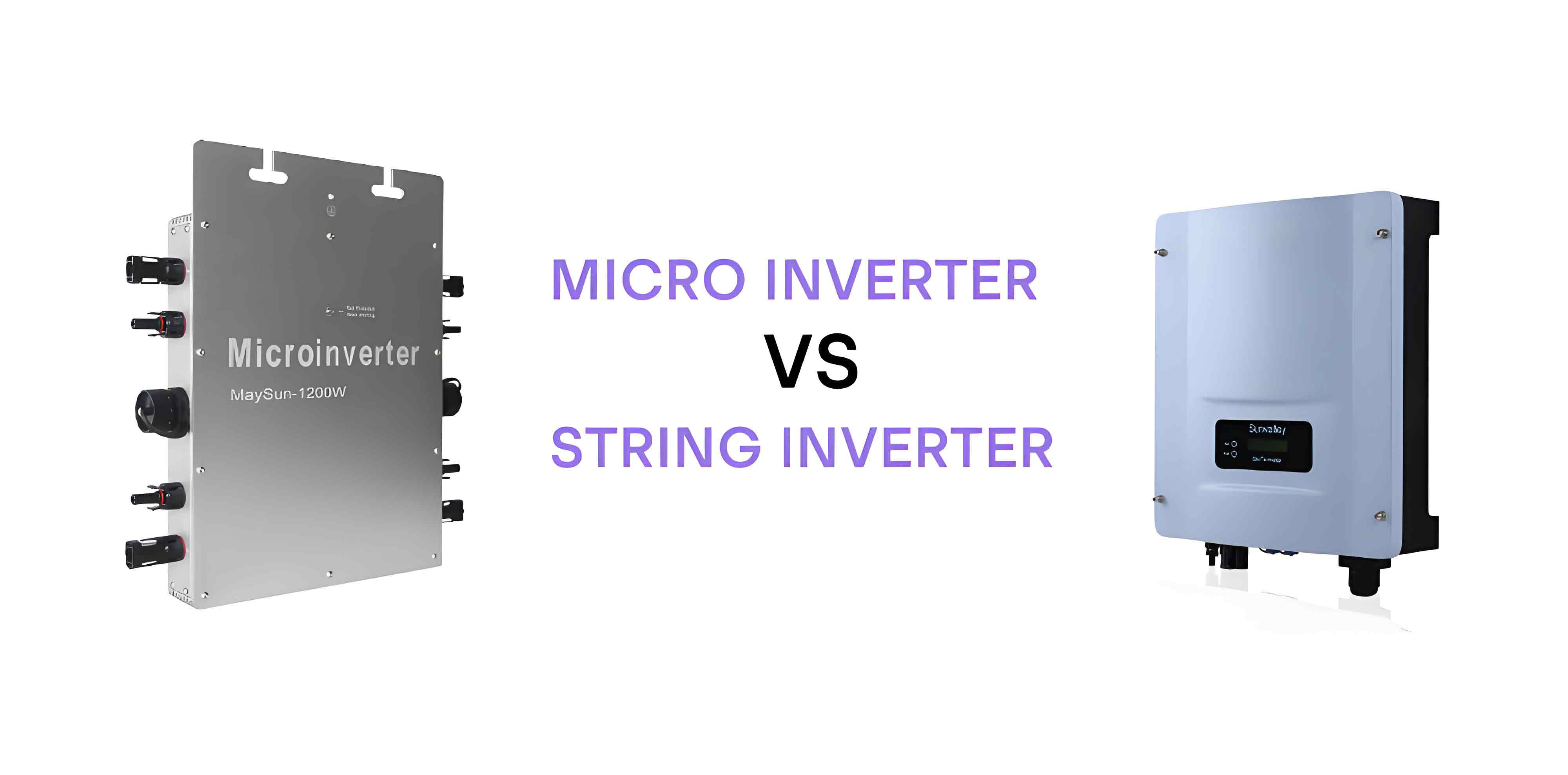Introduction
Choosing the right type of inverter is crucial for optimizing the performance and cost-effectiveness of a solar energy system. Micro inverters and string inverters are two popular options, each with its own set of advantages and disadvantages. This article provides a detailed cost analysis of micro inverters versus string inverters, examining the initial costs, installation expenses, maintenance requirements, and long-term financial benefits associated with each technology.

Understanding Inverter Types
Inverters are essential components of solar energy systems, converting the direct current (DC) produced by photovoltaic panels into alternating current (AC) used by household appliances and fed into the grid. The two primary types of inverters are micro inverters and string inverters.
Table 1: Overview of Inverter Types
| Feature | Micro Inverter | String Inverter |
|---|---|---|
| Installation | Attached to each photovoltaic panel | One inverter for multiple panels |
| Efficiency | High, as each panel operates independently | Lower, performance limited by weakest panel |
| Monitoring | Panel-level monitoring and diagnostics | System-level monitoring only |
| Reliability | Increased system reliability | Dependent on single inverter for multiple panels |
Initial Costs
The initial cost of inverters is a significant factor in the overall cost of a solar energy system. Micro inverters tend to have a higher upfront cost compared to string inverters due to the need for multiple units.
Table 2: Initial Cost Comparison
| Cost Component | Micro Inverter | String Inverter |
|---|---|---|
| Inverter Cost (per watt) | $1.00 – $1.30 | $0.70 – $0.90 |
| Typical System Size | 5 kW | 5 kW |
| Total Inverter Cost | $5,000 – $6,500 | $3,500 – $4,500 |
Installation Expenses
Installation expenses for micro inverters and string inverters can vary based on system complexity and labor requirements. Micro inverters require more connections but offer greater flexibility, potentially reducing labor costs for complex installations.
List: Factors Influencing Installation Expenses
- System Complexity: More complex systems with shading or multiple roof angles may benefit from micro inverters.
- Labor Requirements: Micro inverters require more connections, potentially increasing labor costs.
- Accessibility: Easy access to installation sites can reduce labor costs for both inverter types.
Table 3: Installation Cost Comparison
| Installation Component | Micro Inverter | String Inverter |
|---|---|---|
| Labor Cost (per hour) | $50 – $75 | $50 – $75 |
| Installation Time | 8 – 12 hours | 6 – 10 hours |
| Total Installation Cost | $400 – $900 | $300 – $750 |
Maintenance and Reliability
Maintenance and reliability are crucial considerations for the long-term cost-effectiveness of a solar energy system. Micro inverters offer improved system reliability and simplified maintenance due to their panel-level independence.
List: Maintenance and Reliability Benefits of Micro Inverters
- Panel-Level Independence: Issues with one panel do not affect the entire system.
- Simplified Diagnostics: Easier to identify and address specific panel issues.
- Redundancy: Increased overall system reliability.
Table 4: Maintenance Cost Comparison
| Maintenance Aspect | Micro Inverter | String Inverter |
|---|---|---|
| Annual Maintenance Cost | $100 – $200 | $150 – $300 |
| System Downtime | Minimal, isolated to individual panels | Potentially higher, affects multiple panels |
| Replacement Costs | Higher per unit but less frequent | Lower per unit but can affect more panels |
Long-Term Financial Benefits
The long-term financial benefits of micro inverters can outweigh the higher initial costs, especially in systems with shading issues or complex layouts. Micro inverters often lead to higher energy yields and lower maintenance costs over time.
Table 5: Long-Term Financial Benefit Comparison
| Financial Benefit | Micro Inverter | String Inverter |
|---|---|---|
| Increased Energy Yield | 10% – 20% higher | Dependent on weakest panel |
| Annual Energy Savings | $200 – $400 (5 kW system) | $150 – $300 (5 kW system) |
| Payback Period | 6 – 8 years | 7 – 9 years |
| Total Savings Over 25 Years | $5,000 – $10,000 | $3,750 – $7,500 |
Case Study: Residential Installation
Location: Denver, Colorado
System Size: 6 kW
Configuration: 20 photovoltaic panels
Inverter Comparison:
- Micro Inverters: Initial cost of $7,800, annual maintenance of $200, energy yield of 7,200 kWh/year
- String Inverters: Initial cost of $5,200, annual maintenance of $250, energy yield of 6,600 kWh/year
Outcome:
- Micro Inverters: Higher initial cost offset by greater energy yield and lower maintenance, leading to $2,000 more in savings over 25 years.
- String Inverters: Lower initial cost but higher overall maintenance and slightly lower energy yield.
Conclusion
When analyzing the cost of micro inverters versus string inverters, it is clear that while micro inverters have higher initial costs, they offer significant long-term benefits. These include increased energy harvest, improved system reliability, and enhanced monitoring capabilities. For installations with complex layouts or shading issues, micro inverters can provide a more efficient and cost-effective solution over the lifespan of the system. By carefully considering both the upfront costs and the long-term financial benefits, homeowners and businesses can make informed decisions that optimize their solar energy investments.
